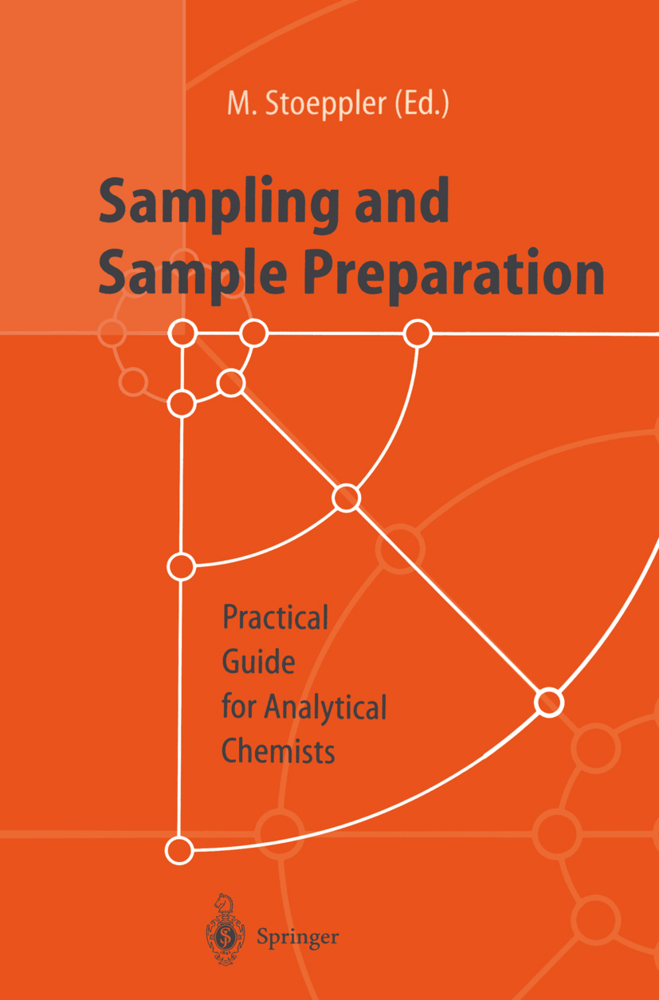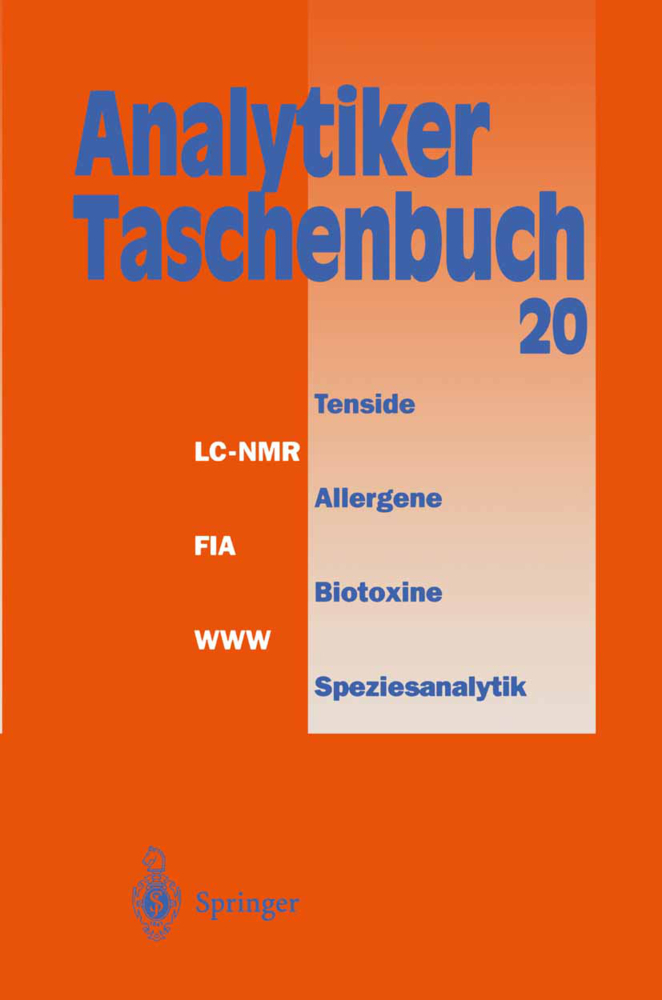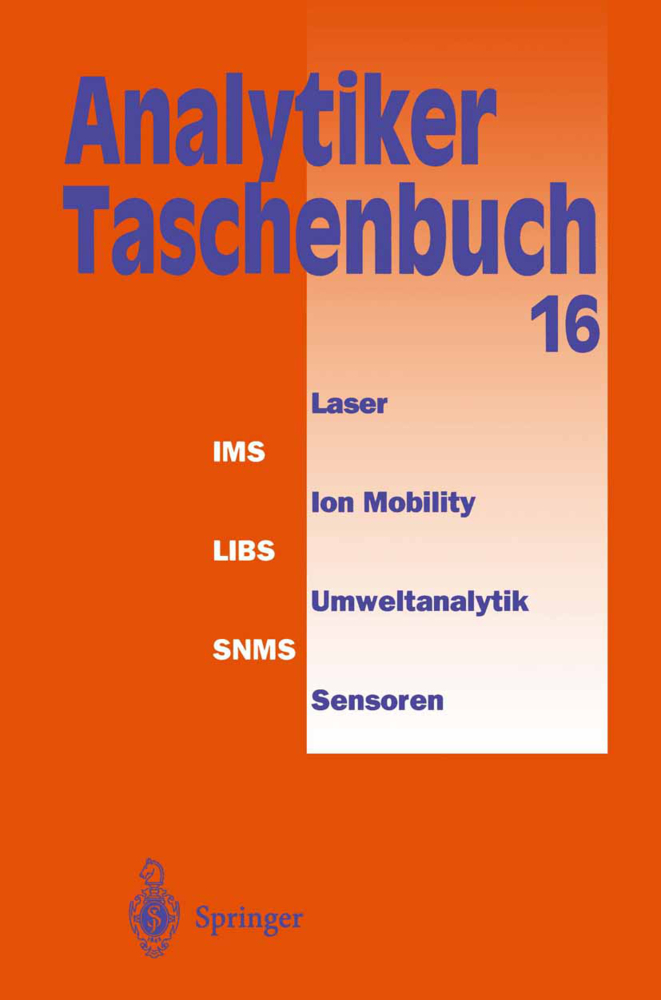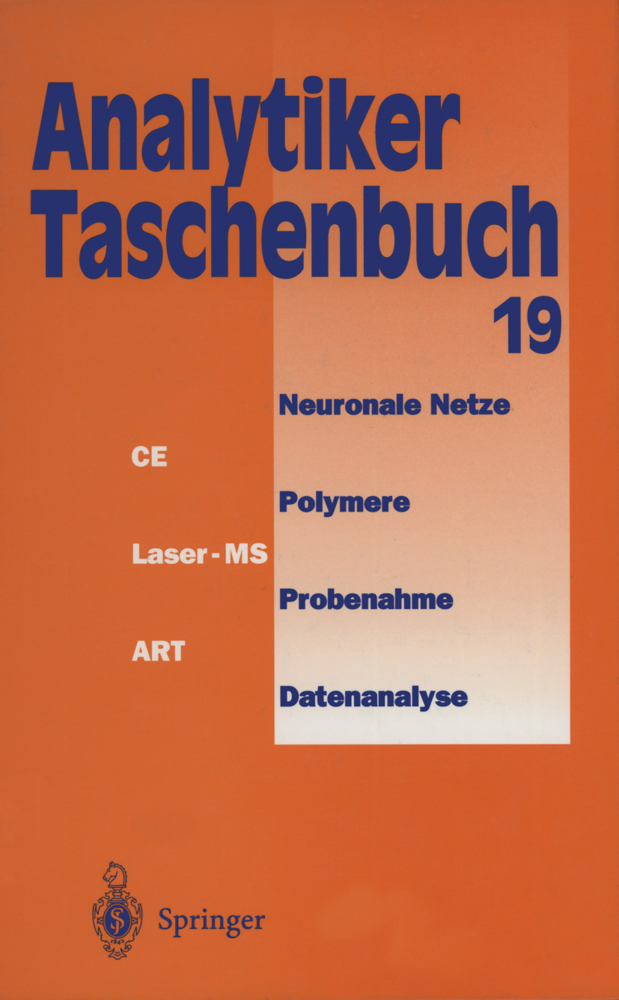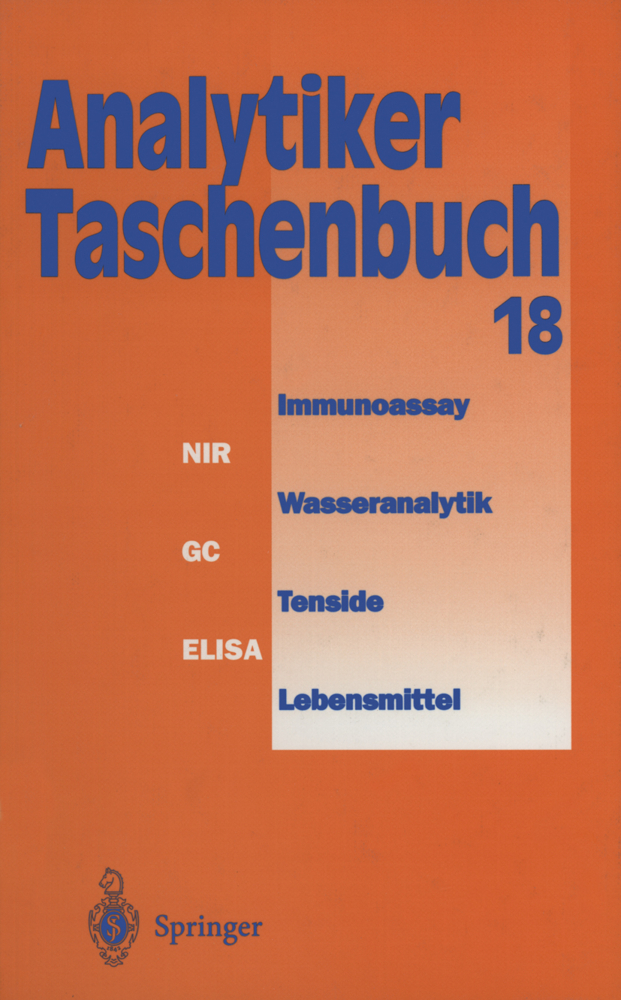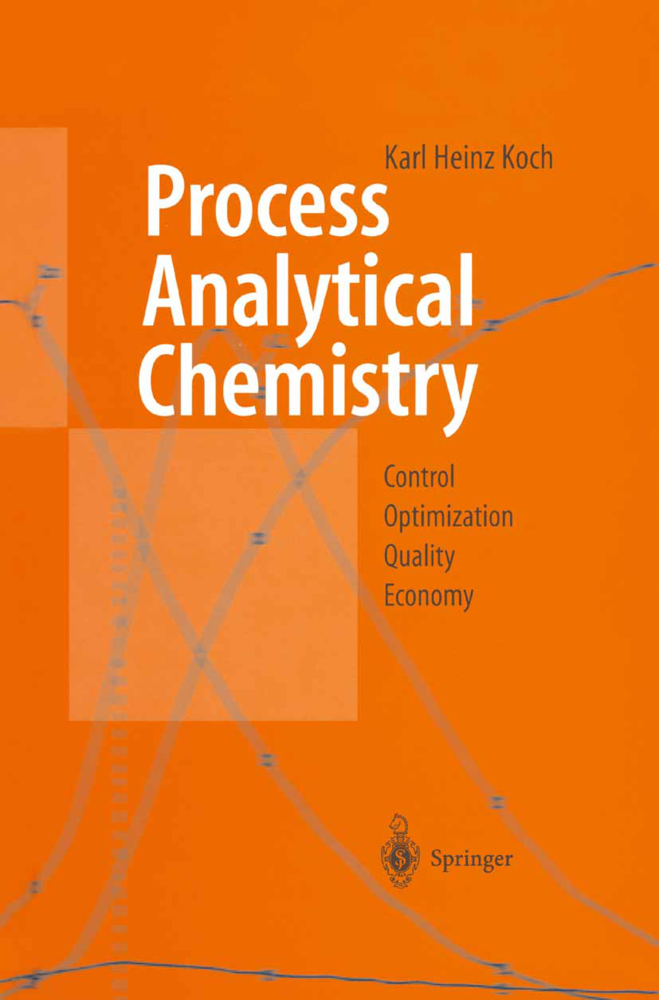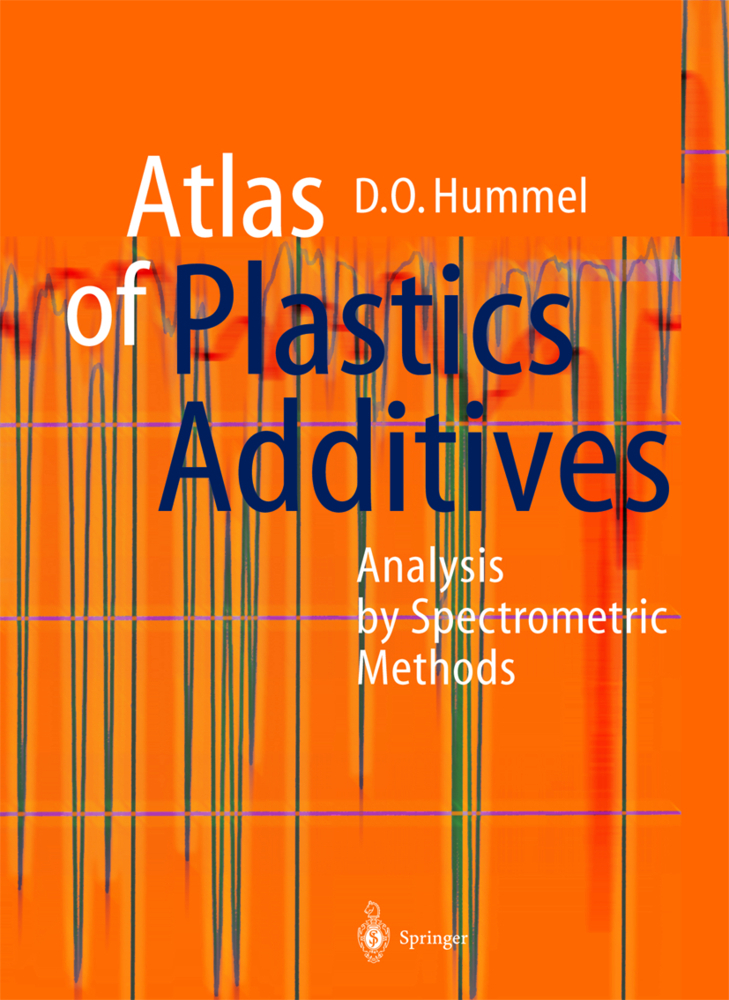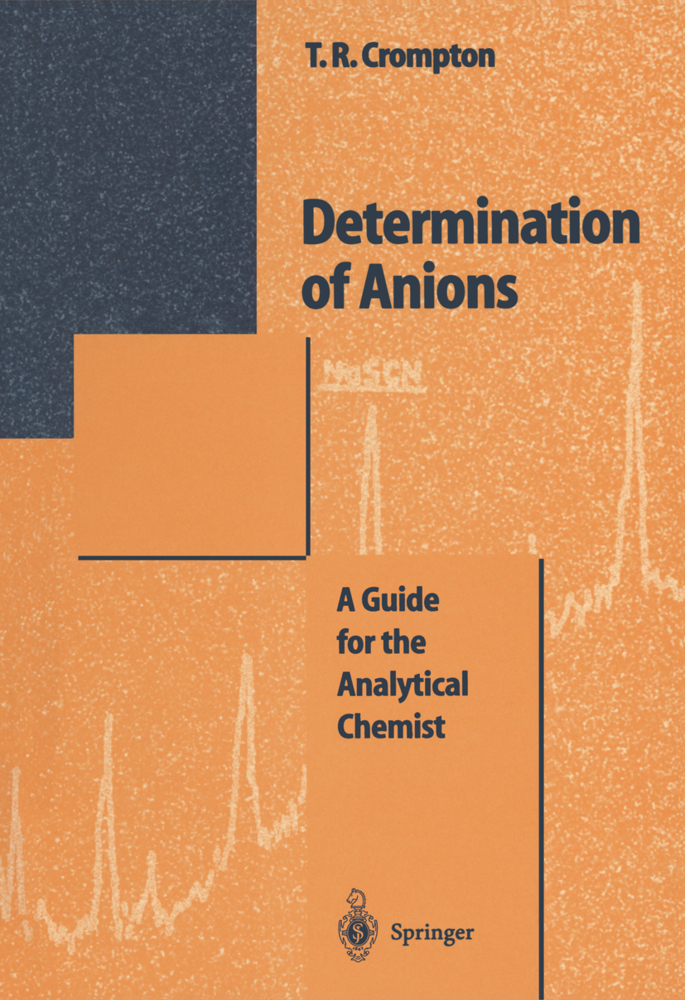Sampling and Sample Preparation
Practical Guide for Analytical Chemists
Sampling and Sample Preparation
Practical Guide for Analytical Chemists
The significant progress achieved in modern instrumental analysis has led to a continuous lowering of detection limits and improved precision. This should in principle permit the reliable and extremely precise analysis of trace compounds mainly trace elements, at levels down to the lowest natural concentrations. However, the frequently observed very high discrepancies between the analyt ical results of different laboratories as well as the deviations from true values are, regrettably, still common in analytical practice. Basic methodological errors at the determination step can usually be minimized or even avoided by carefully per formed quality control measures - e. g. by interlaboratory comparisons and the proper use of certified reference materials. The most severe and often under estimated error sources, however, are those connected with the whole and often extremely complex sampling process, and also to a lesser extent, with sample pre paration prior to analysis. Thus, for these initial steps of an analytical procedure particular experience is needed, as well as a detailed knowledge of the interrela tions between these steps, which always have to be applied with the utmost care. In collaboration with a number of very experienced colleagues working in dif book has tried to contribute to a better ferent research areas, the editor of this understanding of these particular error sources and how they can be overcome in a series of training courses held during the last decade at the "Haus der Technik", Essen, Germany.
1.2 Error Sources Prior to Total Element Determination
1.3 Sampling for Subsequent Determination of Chemical Species
1.4 Studies to Evaluate Sampling Errors
1.5 References
2 Human Specimens
2.1 Introduction
2.2 Human Specimens
2.3 Characterization
2.4 Sampling Procedures
2.5 References
3 Wet Precipitation:Rain and Snow
3.1 Introduction
3.2 Sampling Strategy
3.3 Sampling Equipment
3.4 Sampling in Winter
3.5 Sample Storage
3.6 Sample Preparation
3.7 Analytical Procedures
3.8 Results and Discussion
3.9 Conclusions
3.10 References
4 Sampling of Sea- and Fresh Water for the Analysis of Trace Elements
4.1 Introduction
4.2 Sample Handling
4.3 Sampling Procedures
4.4 Digestion
4.5 Typical Concentration Levels of Selected Trace Elements in the Aquatic Environment and Suitable Analytical Methods
4.6 Quality Assurance During Analysis and Data Evaluation
4.7 References
5 Soils and Soil Solutions
5.1 Introduction
5.2 Materials
5.3 Aspects of Soil Sampling and Recommendations for Its Realization...
5.4 Sample Storage
5.5 Quality Control
5.6 Safety Precautions
5.7 References
6 Waste
6.1 Introduction
6.2 Theoretical Considerations for Sampling
6.3 Sampling and Storage
6.4 Decomposition and Analysis
6.5 Legal Requirements, Standards and Instruction Leaflets
6.6 Specific Problems
6.7 References
7 Collection, Preparation and Long-Term Storage of Marine Samples
7.1 Introduction
7.2 Tasks of the Environmental Specimen Bank
7.3 Collection
7.4 Sample Preparation
7.5 Conclusions
7.6 References
8 Biological Samples
8.1 Introduction: Ecological Basis - Information Content, Function and Indicative Value of Biological Specimens
8.2 QualityAssurance in Biological Sampling
8.3 Development of Specified Sampling Plans
8.4 Specific Problems of Sampling and Preparation of Biological Environmental Specimens
8.5 References
9 Sampling of Industrial Material (Sampling for the Balancing of Elements in the Cement Industry)
9.1 Introduction
9.2 The Cement Clinker Burning Process
9.3 Sampling
9.4 Sample Preparation, Decomposition and Analysis
9.5 Checking Mass Flows
9.6 Conclusions
9.7 References
10 Food Products of Animal and Plant Origin
10.1 Introduction
10.2 Recommendations, Standards and Estimations of the Tolerable Intake of Toxic Metals via Food
10.3 Sample Collection
10.4 Sample Preparation
10.5 Homogenization
10.6 Decomposition Procedures
10.7 Analysis and Quality Control
10.8 Consumption Recommendations
10.9 References
11 Sample Preparation:an Introduction
11.1 General Remarks
11.2 Error Sources
11.3 Decomposition Directly Prior to Determination in Analytical Systems
11.4 Quality Assurance
11.5 References
12 Pressure Digestion: Apparatus, Problems and Applications
12.1 Introduction
12.2 Liner
12.3 Body
12.4 Safety Devices
12.5 Heating System
12.6 Conditions for Digestion
12.7 Completeness of Sample Decomposition
12.8 References
13 Microwave-Assisted Decomposition
13.1 Introduction
13.2 Microwave-Assisted Decomposition Apparatus
13.3 Comparison of Different Microwave-Assisted Digestion Systems
13.4 Criteria for the Evaluation of Microwave Digestion Systems
13.5 Conclusions
13.6 References
14 Decomposition Methods for the Electrochemical Determination of Elements
14.1 Introduction
14.2 Determination without Sample Decomposition
14.3 Oxidative UV-Digestion !.
14.4 Mineralization by Oxygen
14.5 Open Wet Digestion.-14.6 Pressurized Digestion
14.7 Conclusions
14.8 References
15 Decomposition of Materials for Trace Analysis in the Cement Industry
15.1 Introduction
15.2 Decomposition Methods
15.3 Examples
15.4 References.
1 Sampling:an Introduction
1.1 General Remarks1.2 Error Sources Prior to Total Element Determination
1.3 Sampling for Subsequent Determination of Chemical Species
1.4 Studies to Evaluate Sampling Errors
1.5 References
2 Human Specimens
2.1 Introduction
2.2 Human Specimens
2.3 Characterization
2.4 Sampling Procedures
2.5 References
3 Wet Precipitation:Rain and Snow
3.1 Introduction
3.2 Sampling Strategy
3.3 Sampling Equipment
3.4 Sampling in Winter
3.5 Sample Storage
3.6 Sample Preparation
3.7 Analytical Procedures
3.8 Results and Discussion
3.9 Conclusions
3.10 References
4 Sampling of Sea- and Fresh Water for the Analysis of Trace Elements
4.1 Introduction
4.2 Sample Handling
4.3 Sampling Procedures
4.4 Digestion
4.5 Typical Concentration Levels of Selected Trace Elements in the Aquatic Environment and Suitable Analytical Methods
4.6 Quality Assurance During Analysis and Data Evaluation
4.7 References
5 Soils and Soil Solutions
5.1 Introduction
5.2 Materials
5.3 Aspects of Soil Sampling and Recommendations for Its Realization...
5.4 Sample Storage
5.5 Quality Control
5.6 Safety Precautions
5.7 References
6 Waste
6.1 Introduction
6.2 Theoretical Considerations for Sampling
6.3 Sampling and Storage
6.4 Decomposition and Analysis
6.5 Legal Requirements, Standards and Instruction Leaflets
6.6 Specific Problems
6.7 References
7 Collection, Preparation and Long-Term Storage of Marine Samples
7.1 Introduction
7.2 Tasks of the Environmental Specimen Bank
7.3 Collection
7.4 Sample Preparation
7.5 Conclusions
7.6 References
8 Biological Samples
8.1 Introduction: Ecological Basis - Information Content, Function and Indicative Value of Biological Specimens
8.2 QualityAssurance in Biological Sampling
8.3 Development of Specified Sampling Plans
8.4 Specific Problems of Sampling and Preparation of Biological Environmental Specimens
8.5 References
9 Sampling of Industrial Material (Sampling for the Balancing of Elements in the Cement Industry)
9.1 Introduction
9.2 The Cement Clinker Burning Process
9.3 Sampling
9.4 Sample Preparation, Decomposition and Analysis
9.5 Checking Mass Flows
9.6 Conclusions
9.7 References
10 Food Products of Animal and Plant Origin
10.1 Introduction
10.2 Recommendations, Standards and Estimations of the Tolerable Intake of Toxic Metals via Food
10.3 Sample Collection
10.4 Sample Preparation
10.5 Homogenization
10.6 Decomposition Procedures
10.7 Analysis and Quality Control
10.8 Consumption Recommendations
10.9 References
11 Sample Preparation:an Introduction
11.1 General Remarks
11.2 Error Sources
11.3 Decomposition Directly Prior to Determination in Analytical Systems
11.4 Quality Assurance
11.5 References
12 Pressure Digestion: Apparatus, Problems and Applications
12.1 Introduction
12.2 Liner
12.3 Body
12.4 Safety Devices
12.5 Heating System
12.6 Conditions for Digestion
12.7 Completeness of Sample Decomposition
12.8 References
13 Microwave-Assisted Decomposition
13.1 Introduction
13.2 Microwave-Assisted Decomposition Apparatus
13.3 Comparison of Different Microwave-Assisted Digestion Systems
13.4 Criteria for the Evaluation of Microwave Digestion Systems
13.5 Conclusions
13.6 References
14 Decomposition Methods for the Electrochemical Determination of Elements
14.1 Introduction
14.2 Determination without Sample Decomposition
14.3 Oxidative UV-Digestion !.
14.4 Mineralization by Oxygen
14.5 Open Wet Digestion.-14.6 Pressurized Digestion
14.7 Conclusions
14.8 References
15 Decomposition of Materials for Trace Analysis in the Cement Industry
15.1 Introduction
15.2 Decomposition Methods
15.3 Examples
15.4 References.
Stoeppler, Markus
| ISBN | 978-3-642-64486-3 |
|---|---|
| Artikelnummer | 9783642644863 |
| Medientyp | Buch |
| Auflage | Softcover reprint of the original 1st ed. 1997 |
| Copyrightjahr | 2011 |
| Verlag | Springer, Berlin |
| Umfang | XIV, 202 Seiten |
| Abbildungen | XIV, 202 p. |
| Sprache | Englisch |

